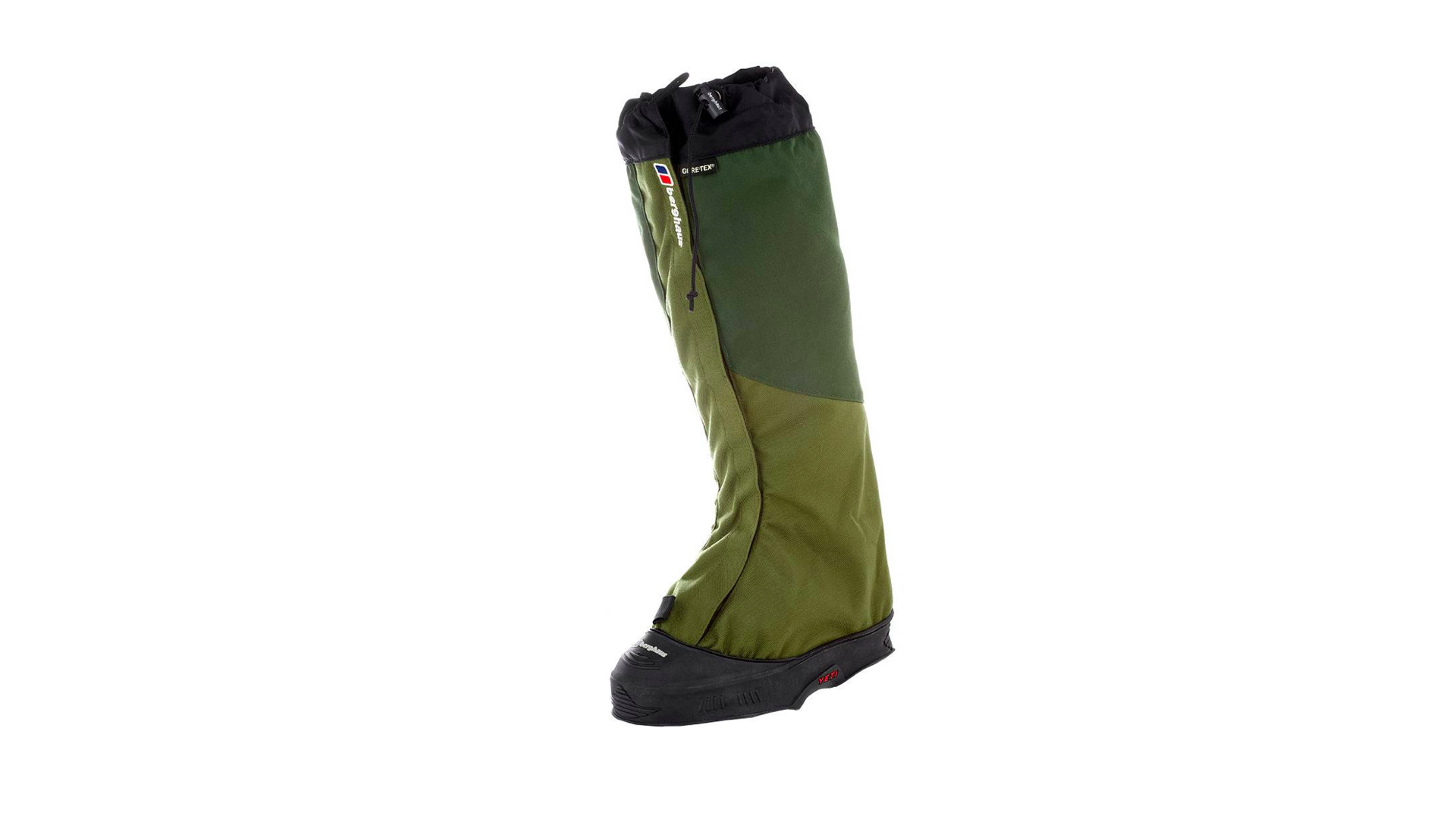Advnture Verdict
Something of a legend in the UK – particularly amongst those who have served in the forces – the Berghaus Yeti is a super-tough Gore-Tex gaiter that offers ultimate protection for the boggiest yomps.
Pros
- +
Extremely tough and durable
- +
Rubber rand is replaceable
- +
Most protective gaiter on the market
- +
Reliable Gore-Tex waterproof-breathable membrane
Cons
- -
Tricky to fit
- -
Impractical to take on and off
- -
Can get hot and sweaty
You can trust Advnture
Berghaus Yeti Attak gaiters: first impressions
Berghaus Yeti Attak gaiters are the latest version of a design developed in the early 1980s and which have been a stalwart of Berghaus’s product range for nearly 40 years. That’s impressive longevity for a bit of outdoor kit. And although the fabrics, construction and fit have been refined over the years, the basic design remains unchanged, and the continue to stake a claim as being among the best gaiters.
Although they’re very popular with a certain brand of hillwalker today – namely, those who relish nothing more than a long yomp through peat bogs, moorland and those types of hiking trails – Yeti gaiters really built their reputation amongst British Army soldiers and Royal Marines commandos who served in the Falklands campaign of 1982. The testing terrain and extreme weather conditions encountered in the islands were a real problem, leading to wet feet and the onset of ‘trench foot’, a fungal infection that causes painful swelling and blisters, first named after the suffering of men in the trenches during the First World War.
In the Falklands, this condition was responsible for nearly 14 per cent of non-fatal casualties. The solution? Berghaus Yeti gaiters, which were issued by the MoD to counter the issue. Completely encasing the foot, ankle and lower leg up to the knee, these gaiters were based on designs developed for Alpine and Himalayan mountaineering, but proved to be ideally adapted for crossing streams, bogs and all other sorts of wet, muddy ground.
Today, the latest version of the Yeti is the Berghaus Yeti Attak, which is specially adapted for hillwalking, though its military origins are still evident in the olive-green colorway. It consists of ultra-rugged 1,000-denier nylon bonded to a Gore-Tex membrane. This is stitched onto an all-round rubber Skywalk rand, which is designed to stretch over the sole of a hiking boot. The front closure is a real belt-and-braces affair, consisting of a full-length zip with a Velcro storm flap overlay. Top adjustment is via a cord lock toggle. Once they’re fitted, the Yeti gaiters fully encase the foot, ankle and lower leg, extending right up to the knee.
• RRP: $130 (US) / £95 (UK)
• Weight (per pair): 470g /16.6oz
• Length: Long
• Sizes: S / M / L / XL / XXL
• Colors: Green
Berghaus Yeti Attak: on the trails
The first admission to make is that the design of these gaiters means they can be a bit of a struggle to get on. They work best with stiff-soled hiking boots, but it’s vital to buy the right size for your footwear (or even consider going a size up). Even then, users have recommended a host of techniques to aid fitting, ranging from heating the rubber rand on a radiator to sprinkling them with talcum powder or smearing them with washing up liquid. The other alternative, of course, is brute strength. Either way, the key is to get the stiff rubber rand to stretch over both the heel and toe of the boot fully, while ensuring the instep strap is correctly positioned. This should ensure a proper weatherproof seal.
All this means that once the Yetis are on, they stay on. This is a good thing, since they completely protect the boot, offering pretty much the same waterproof protection as a wellington. As well as shrugging off the worst rain, they’ll also keep your boots dry during stream crossings up to at least mid-shin. The tough nylon fabric is also highly resistant to abrasion, allowing you to plunge through gorse, bracken, briar and bramble without undue concern. It is a proven design, though it won’t work with flimsier modern boots – what you need is a sturdy pair of traditional full-grain leather boots (think the Zamberlans, Altbergs and Meindls of this world). As that style of footwear might suggest, these are gaiters built for long, challenging yomps, not fast and light mountain missions.
They are also more comfortable in cold, wet conditions than milder weather. Despite the breathable Gore-Tex lining, the heavy fabric can still feel hot and humid. Save these for real dreich weather in places like the Peaks and the Pennines. Since these gaiters are so thick, they are also not as supple or as precise fitting as some. Don’t expect a super trim fit, particularly if you have slimmer calves. But despite those drawbacks, these gaiters still have much to recommend them. Ultimately, if you’re looking for maximum protection from the elements plus super-rugged durability, there’s probably no better gaiter out there.
All the latest inspiration, tips and guides to help you plan your next Advnture!
An outdoors writer and editor, Matt Jones has been testing kit in the field for nearly a decade. Having worked for both the Ramblers and the Scouts, he knows one or two things about walking and camping, and loves all things adventure, particularly long-distance backpacking, wild camping and climbing mountains – especially in Wales. He’s based in Snowdonia and last year thru-hiked the Cambrian Way, which runs for 298 miles from Cardiff to Conwy, with a total ascent of 73,700 feet – that’s nearly 2½ times the height of Everest. Follow Matt on Instagram and Twitter.


